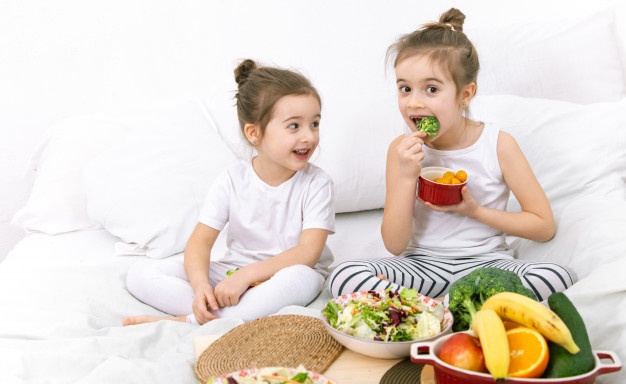Getting kids to eat enough vegetables can be quite a task, but a new Penn State study found that simply adding more veggies to their plates resulted in children consuming more vegetables during the meal.
The findings of the study were published in the journal ‘Appetite’.
The researchers found that when they doubled the amount of corn and broccoli served at a meal — from 60 to 120 grams — the children ate 68 per cent more of the veggies or an additional 21 grams.
Seasoning the vegetables with butter and salt, however, did not affect consumption. The daily recommended amount of vegetables for kids is about 1.5 cups a day, according to the official Dietary Guidelines for Americans as set by the US Departments of Agriculture and Health and Human Services.
Related Topic: 8 Foods You Shouldn’t Feed Your Children so that they Remain Healthy
“The increase we observed is equal to about one third of a serving or 12 per cent of the daily recommended intake for young children,” said Hanim Diktas, a graduate student in nutritional sciences.
“Using this strategy may be useful to parents, caregivers and teachers who are trying to encourage kids to eat the recommended amount of vegetables throughout the day,” added Diktas.
Barbara Rolls, Helen A. Guthrie Chair and director of the Laboratory for the Study of Human Ingestive Behavior at Penn State, said the findings support the MyPlate guidance from the US Department of Agriculture, which recommends meals high in fruits and vegetables.
You may like: Heavily marketed kids’ cereals are least healthy
“It’s important to serve your kids a lot of vegetables, but it’s also important to serve them ones they like because they have to compete with the other foods on the plate,” Rolls said.
“Parents can ease into this by gradually exposing kids to new vegetables, cooking them in a way their child enjoys, and experimenting with different flavors and seasonings as you familiarize them,” Rolls added.
Source: Sciencealert.com
You May Like:
10 Facts About Healthy Parenting
A famous quote says that “Anyone can have a child and call themselves a parent, but a real parent is the one who puts their child above all their wants”. When you become a parent, it instills a tremendous responsibility on you. But often, we confuse parenting to be restricted to loving your child or punishing them. But it is much more than that. In this post, we will be discussing ten facts of healthy parenting which will give you some idea about what the term “healthy parenting” actually means. Read More:


